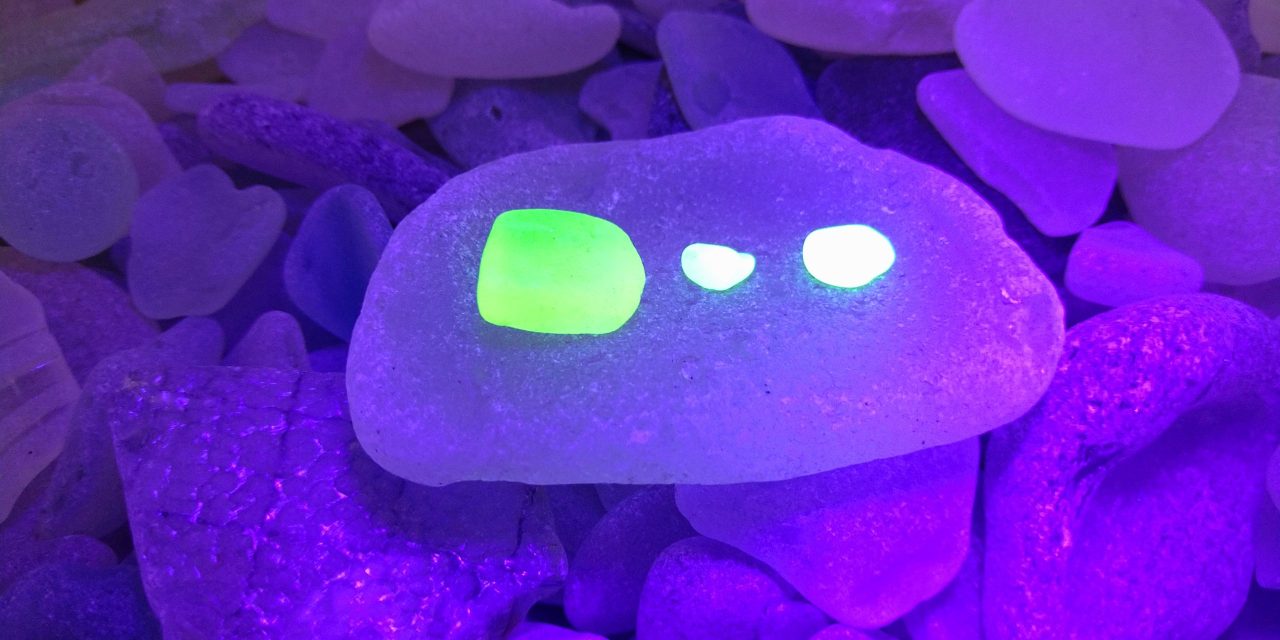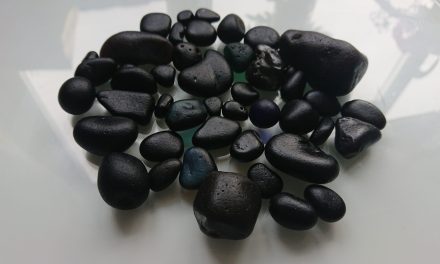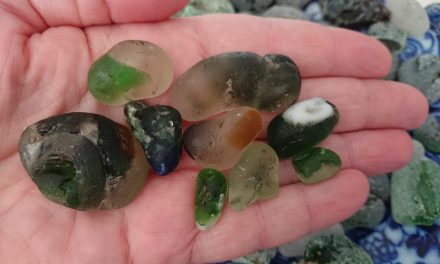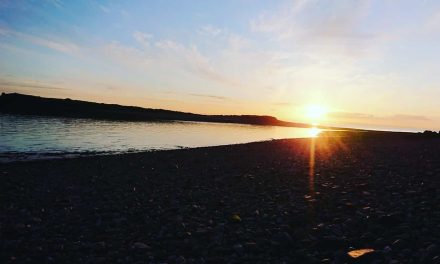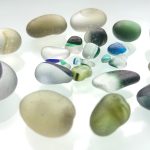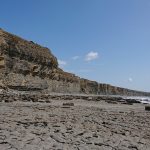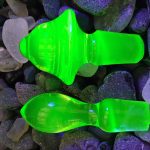People who go beachcombing often find things on the beach that they wouldn’t expect to find. Seaglass, for example, is an excellent find on its own, but a piece of seaglass that glows is even more amazing. In this article, we will tell you what it is and how to identify uranium glass.
Uranium sea glass is not as common as other types of sea glass, so you may not come across it very often. Uranium glass isn’t always easy to identify, so you might find some of it among the pieces of sea glass that you have collected in the past.
What to expect from our article
How to identify uranium glass
The simplest way to learn how to identify uranium glass is by using a blacklight torch. A blacklight is a source of ultraviolet light. The UV in the black light makes the uranium glow a vivid green colour. During the Depression, iron oxide was added to the glass to make it even greener. Not all uranium glass is active, which means it won’t always glow. There are different colours of uranium glass, but the coloured versions aren’t always made with uranium.
What is uranium glass?
Uranium glass is a type of glass that is created when uranium is added, usually in the form of oxide diuranate. This process gives the glass its colour. Uranium glass usually contains trace amounts of uranium at around 2%, but in some pieces of glass from the 20th century, uranium makes up as much as 25%. Uranium glass was made for many different reasons; it was often used for tableware, vases, and decorative dressing table sets. Uranium glass wasn’t being produced as much after the Cold War, which now makes uranium glass a collectable item.
What is uranium?
Uranium is a heavy metal that has been used for many different things throughout history. It can be found in seawater and most rocks at concentrations ranging from two to four parts per million. Uranium was discovered by a German chemist and was named after the planet Uranus, which was discovered eight years earlier. Uranium is thought to have formed in a supernova approximately 6.6 billion years ago and has a melting point of 1132 degrees Celsius.
Where do I look for uranium glass?
Uranium glass is a very unique kind of seaglass that beachcombers all over the world would love to find and add to their collections. Uranium glass can be found on beaches all over the UK, just like regular sea glass. You won’t find it on every beach, but you will likely find some on beaches where sea glass is more common.
Uranium glass can end up on beaches because of how people used to get rid of their rubbish in the past. Before environmental issues became a concern, people would throw their rubbish over the edges of cliffs and straight onto the beach. There are also many coastal rubbish dumps located around the UK that have eroded, spilling out their contents.
Is uranium glass harmful?
On a Geiger counter, uranium glass may exhibit radiation levels that are greater than those of background radiation levels. However, the vast majority of this glass is only slightly radioactive, so it is completely safe. In most cases, it only contains trace amounts of uranium, which makes it roughly as radioactive as a smoke detector.
Can I use uranium seaglass to make jewellery?
If you plan on making your jewellery, you must have an in-depth understanding of the material that you are working with because there are occasionally very old pieces of uranium that can contain higher levels of radiation.
Some sea glass collectors have Geiger counters, which allow them to determine the amount of radioactivity present in a piece of glass and determine whether or not it is safe to handle. You should invest in a Geiger counter if you intend to use your uranium sea glass to create and sell uranium jewellery.
A Geiger counter will allow you to determine whether or not your finished products contain any detectable levels of radioactivity. Even though the likelihood of your uranium glass being hazardous is low, you should still take precautions because there is still a remote possibility that it could be hazardous.

